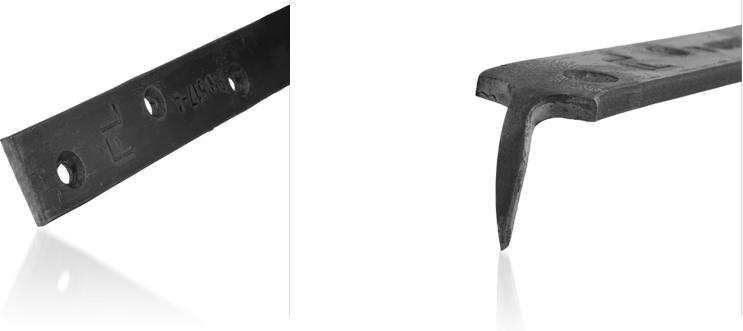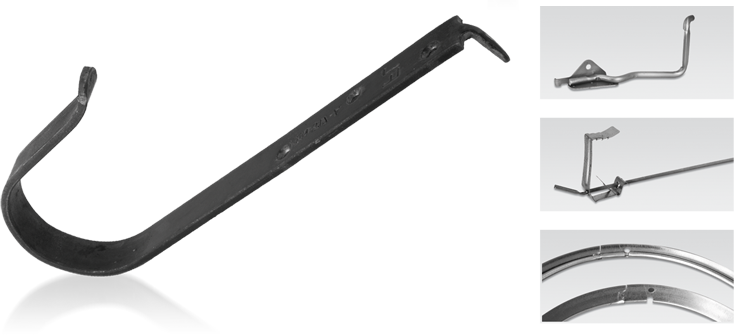| Stage I | Stage II |


End stage
Strip from coil 1/4“ x 1 1/6“, 2 sec. cycle time, progressive die, part range with 15 versions, series runs from 8,000 parts, finished part falling out, power requirement approx. 25 kW
Strip machining
Metal strips are frequently used in structural applications to join metal sheets where welding is not the best solution or the angle between the sheets does not allow it. Strips can also be used to manufacture products for other applications such as striker plates for the doors.
What does strip machining involve?
When working on a strip, there can be different processes involved, such as cold bending, punching, pressing and machining. Of course, it will depend on the features required by the specific application.
Now, if we focus on the machining process, there are going to be different features that can be achieved, being holes, grooves, chamfers and tapers the most common ones. Depending on the application, more than one feature may be required, and a series of tools is needed to achieve them.
Traditionally, each feature is achieved independently, and they require specific tooling and operators for each of them. Moreover, further steps are needed to achieve any other feature that it is not possible through machining, like bending and marking.
If bending is required, it will require a bending step. Cold bending is a forming process where a metal strip or sheet is bent to the required angle without the need of heat, so it is performed at room temperature. It is usually done with a slider or a press, where the tool forces the metal against a die with the desired angle. Another common method uses roller to press the metal against the die.
With the cold bending process, the metal strip can take different shapes, including large diameter curves and a varied group of angles according to specifications. Normally, when performed with traditional tools, the whole bending process will require one step for each angle required.
Of course, these requirements result in higher costs and reduced efficiency, which in turn means less productivity, a longer time to market and lower profitability.
Strip machining with Schmale Machines
To avoid the negative aspects of the activities described before, Schmale machines provide automated solutions that integrate all of the required processes into the same production cycle.
Metal strip usually comes in the form of coils, so an automated decoiler and a servo-electric feeder are used to take the metal strip into the processing cycle. The entire cycle takes only a few seconds, and the parts automatically move through the different processes to generate the expected results.
Series runs begin at 1 (one) part, which clearly represents an enormous increase in efficiency and productivity and a significant reduction in the time to market, meaning that the profitability of your business will be higher. We also offer a part range with 15 versions.
To have a better view of the process please refer to the pictures and videos.
If you are looking for wire and strip manufacturing solutions integrated in a fully automated production process, or you have any further questions, please do not hesitate to contact us and we will gladly help you.
